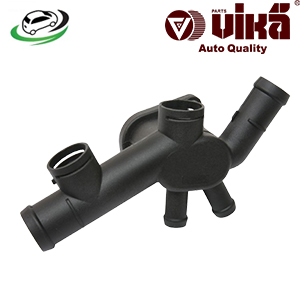Get Engine Oil Pump AUDI B5 A4 1.8T/B6 A4/TT MKI / VW 337/20AE/Golf IV/Jetta IV/Jetta IV GLI/Passat B5/New Beetle 06A115105B
The engine oil pump is a vital component of your vehicle’s engine, responsible for circulating oil throughout the engine to ensure it runs smoothly and efficiently. Here’s a simple explanation of what it is, how it works, and why it’s important.
What is an Engine Oil Pump?
The engine oil pump is a mechanical device that pumps engine oil from the oil pan through the engine. Its main job is to ensure that oil reaches all the moving parts of the engine, such as the pistons, crankshaft, and camshaft, to keep them properly lubricated.
How Does the Engine Oil Pump Work?
Here’s a basic overview of how the engine oil pump functions:
- Oil Intake: The oil pump draws oil from the oil pan, which is located at the bottom of the engine. The oil pan holds the engine oil when the engine is off.
- Pumping Oil: Inside the oil pump, there are gears or rotors that spin and create pressure. As these parts move, they push the oil through the pump and into the engine.
- Distributing Oil: Once the oil is pumped, it travels through various channels and passages in the engine. The oil reaches key areas, including the bearings, pistons, and other moving parts, where it helps to reduce friction and wear.
- Returning Oil: After the oil has lubricated the engine parts, it returns to the oil pan to be recirculated. The cycle repeats as long as the engine is running.
Why is the Engine Oil Pump Important?
The engine oil pump is crucial for several reasons:
- Lubrication: The primary function of the oil pump is to provide lubrication to the engine’s moving parts. Proper lubrication reduces friction and helps prevent wear and tear on components.
- Cooling: Engine oil also helps to absorb and dissipate heat. By circulating the oil, the pump helps to cool the engine and prevent overheating.
- Cleaning: The oil carries away contaminants and debris that can accumulate in the engine. By pumping the oil through the engine, the pump helps to keep the engine clean and running smoothly.
- Maintains Oil Pressure: The oil pump maintains the correct oil pressure within the engine. Proper oil pressure ensures that all parts receive adequate lubrication and helps the engine operate efficiently.
Signs of a Failing Oil Pump
If the oil pump starts to fail, you might notice some symptoms:
- Oil Pressure Warning Light: Most vehicles have an oil pressure warning light on the dashboard. If this light comes on, it could indicate a problem with the oil pump or low oil pressure.
- Low Oil Pressure: If you notice a drop in oil pressure, it could be a sign that the oil pump is not working properly. This might be visible on the oil pressure gauge or through a warning light.
- Engine Noise: A failing oil pump may cause unusual engine noises, such as knocking or ticking sounds. This can occur if the oil is not reaching the moving parts properly.
- Overheating Engine: If the engine is overheating, it might be due to inadequate lubrication or cooling caused by a faulty oil pump.
- Oil Leaks: While not always directly related to the oil pump, oil leaks can sometimes indicate a problem with the oil pump or its connections.
Maintaining the Engine Oil Pump
To keep the engine oil pump in good working condition, follow these maintenance tips:
- Regular Oil Changes: Change the engine oil and oil filter at regular intervals as recommended by the vehicle manufacturer. Clean oil helps the pump operate efficiently and prevents damage.
- Check Oil Levels: Regularly check the oil level using the dipstick. Low oil levels can lead to poor pump performance and potential engine damage.
- Inspect for Leaks: Look for any signs of oil leaks around the oil pump area. Addressing leaks promptly can prevent issues with oil pressure and pump performance.
- Use Quality Oil: Always use the type and grade of oil recommended by the vehicle manufacturer. Using the correct oil helps maintain proper lubrication and pressure.
Replacing the Engine Oil Pump
If the oil pump fails or shows signs of significant wear, it’s important to replace it. Here’s a simple overview of the replacement process:
- Preparation: Gather the necessary tools and a new oil pump. Ensure the engine is cool and secure the vehicle on a flat surface.
- Drain the Oil: Before removing the oil pump, drain the engine oil from the oil pan to prevent spills. Remove the oil filter as well.
- Remove the Old Oil Pump: Locate the oil pump, which is usually mounted on the front of the engine. Unbolt and remove the old pump. Be prepared for some oil to spill out during this process.
- Install the New Oil Pump: Position the new oil pump in place and secure it with the bolts. Make sure it is properly aligned and tightened according to the manufacturer’s specifications.
- Reinstall the Oil Filter: Install a new oil filter and ensure it is properly tightened.
- Refill with Oil: Refill the engine with the appropriate type and amount of oil. Check for leaks around the oil pump and oil filter.
- Check Oil Pressure: Start the engine and check the oil pressure gauge or warning light to ensure the new pump is working properly.
Follow us on Facebook for more parts.




